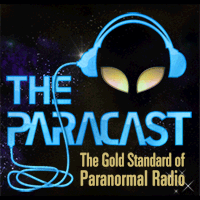A new procedure can quickly and efficiently increase the length of human telomeres, the protective caps on the ends of chromosomes that are linked to aging and disease, according to scientists at the Stanford University School of Medicine.
Telomere extension turns back aging clock in cultured human cells, study finds -- ScienceDaily
There is now compelling evidence that the length of a person’s life span is dictated by the limited number of times a human cell can divide. Though the immortal reproductive cell can divide a limitless number of times, once the human reproductive cell, in the developing embryo, turns into a developmental cell the clock starts ticking and the cell’s fate is doomed to a limited 75-100 number of cell divisions (the Hayflick Limit). Once that limit has been reached, the cell and all of its progeny completely lose the ability to divide and then enter a phase called senescence.
The ticking clock in this case is found at the tips of the cell’s chromosomes in a region called the telomere. It is believed that telomeres may have evolved to prevent the unlimited growth of cells by limiting their life span. Telomeres are made up of subunits (or bases) of DNA called A, C, G, and T. In the telomere, these bases are arranged in six base repeat units of TTAGGG. When a human is first conceived, the length of the telomeres averages about 15,000 bases (up to 2,500 TTAGGG repeat units) as measured by a process called terminal restriction fragment length analysis. The length then begins to decrease at a rate of about 100 bases per cell division.
By the time a person is born, the average telomere length has already dwindled to about 10,000 bases and then throughout the rest of a person’s lifetime the average length of the telomeres gradually decreases to about 5,000 bases at which time the person’s cells lose the ability to divide. These cells are then senescent, and the person suffers and dies of old age.
Turning on Immortality: The Debate Over Telomerase Activation - Life Extension
Telomere extension turns back aging clock in cultured human cells, study finds -- ScienceDaily
There is now compelling evidence that the length of a person’s life span is dictated by the limited number of times a human cell can divide. Though the immortal reproductive cell can divide a limitless number of times, once the human reproductive cell, in the developing embryo, turns into a developmental cell the clock starts ticking and the cell’s fate is doomed to a limited 75-100 number of cell divisions (the Hayflick Limit). Once that limit has been reached, the cell and all of its progeny completely lose the ability to divide and then enter a phase called senescence.
The ticking clock in this case is found at the tips of the cell’s chromosomes in a region called the telomere. It is believed that telomeres may have evolved to prevent the unlimited growth of cells by limiting their life span. Telomeres are made up of subunits (or bases) of DNA called A, C, G, and T. In the telomere, these bases are arranged in six base repeat units of TTAGGG. When a human is first conceived, the length of the telomeres averages about 15,000 bases (up to 2,500 TTAGGG repeat units) as measured by a process called terminal restriction fragment length analysis. The length then begins to decrease at a rate of about 100 bases per cell division.
By the time a person is born, the average telomere length has already dwindled to about 10,000 bases and then throughout the rest of a person’s lifetime the average length of the telomeres gradually decreases to about 5,000 bases at which time the person’s cells lose the ability to divide. These cells are then senescent, and the person suffers and dies of old age.
Turning on Immortality: The Debate Over Telomerase Activation - Life Extension
